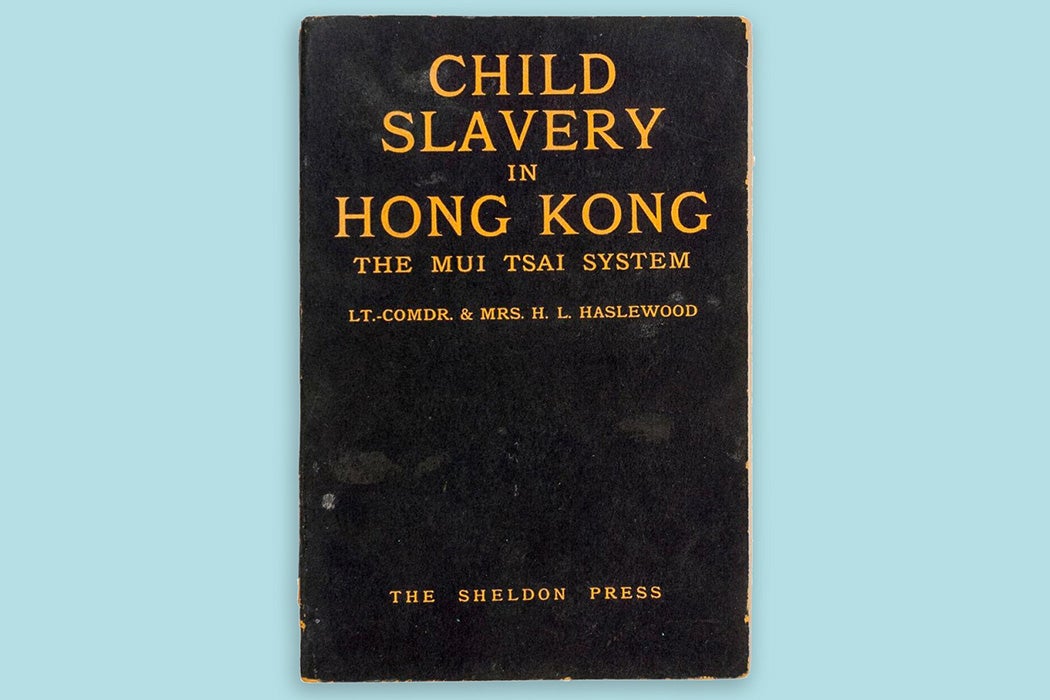In the early twentieth century, the British colonial government in Hong Kong and Malaya was stymied by a persistent social problem: the mui tsai custom, which the British saw as a uniquely Chinese ill. Drawing on their experience in Hong Kong, colonial officials duly placed mui tsai in Malaya under the purview of the “Chinese Protectorate,” which was responsible for Chinese migrants.
But “the treatment of the mui tsai issue as an essentially Chinese problem yields an inadequate understanding of the controversy and its outcome,” argues historian Rachel Leow—especially in Southeast Asia’s Straits Settlements, which were much more diverse than colonial Hong Kong. After all, “only in the intensely multi-racial conditions of peninsular Malaya could the question be asked: ‘Do you own non-Chinese mui tsai?’” she writes.
The Cantonese term mui tsai refers to indentured female bond maids, who were typically sold into domestic service while still young children, by families who could not afford to raise them. Even though money often changed hands in Chinese adoptions and marriage, British authorities assumed that “[i]f money accompanied the transfer of a mui tsai…a mui tsai was a slave.” So, under pressure from activists, they pushed multiple rounds of legislation to regulate the system.
From the beginning, Chinese family structures confounded attempts at regulation. It could be difficult, for instance, to distinguish between mui tsai and san po tsai, who were betrothed as children and raised in their future husbands’ households, where they grew up doing housework.
“A girl might be presented to another family as a san po tsai, but if the betrothed son decided to reject the marriage when the time came, she would likely stay on in the family as a household drudge,” explains Leow. “Conversely, a mui tsai might later be adopted as a concubine and thus establish herself in the household as a legitimate matriarch.”
If having to pin down mui tsai status stymied the British, “colonial officials took refuge in the knowledge that, at the very least, it was most definitely a Chinese problem,” Leow says.
But their assumption would be shaken in the multiracial landscape of colonial Malaya.
Scrutinizing colonial reports from the 1930s, Leow finds that “[t]here seemed to exist comparable systems of domestic servitude that involved neither Chinese employers nor Chinese girls,” such as the case of “a Malay girl employed (and ill-treated) by an Arab family,” as well as “an analogous system of domestic female labor” across different castes in the Indian community.
Meanwhile, girls of all races were showing up in Chinese households, too. Leow notes that
several subjects independently testified to the normalcy of Chinese families acquiring Tamil, Siamese, Javanese, Malay and “Annamite” girls, and there is an interesting suggestion by another that Siamese parents were also voluntarily selling their children to Malayan Chinese families.
Colonial restrictions on female arrivals from China may have spurred the ethnic diversification of mui tsai, which “complicated matters further, particularly in terms of immigration,” Leow writes. “For example, were customs officials to detain dubious Chinese children at the ports, but allow children and families of other races through without question?”
The establishment of a settled Chinese population also cemented another challenge. Compared with mui tsai in Hong Kong, Straits Chinese girls “were much farther removed from their natal families,” and they could “conceivably be sold, transferred or simply inherit their status”—so Malayan mui tsai might become a hereditary class, beyond the reach of immigration controls.
In this way, the British discovered in their Straits Settlements territories that the mui tsai custom “could no longer be governed simply as a product of Chinese social vice.”
As Leow points out, “in Malaya, the mui tsai controversy persistently defied the colonial rhetoric of ethnic governance, which foundered in the face of the confusing plurality of the Malayan mui tsai.”
Weekly Newsletter
Eventually, she argues, the multiracialism of mui tsai in Malaya made it necessary to understand and address the system not as a racial peculiarity but as a more universal matter of child welfare.
By the late 1930s, then, the colonial government had come to realize that its duty was to “not simply Chinese girls arbitrarily dubbed ‘mui tsai,’ but children of all races, shifting and slipping in and out of the households of this strange plural society.”
Support JSTOR Daily! Join our membership program on Patreon today.







